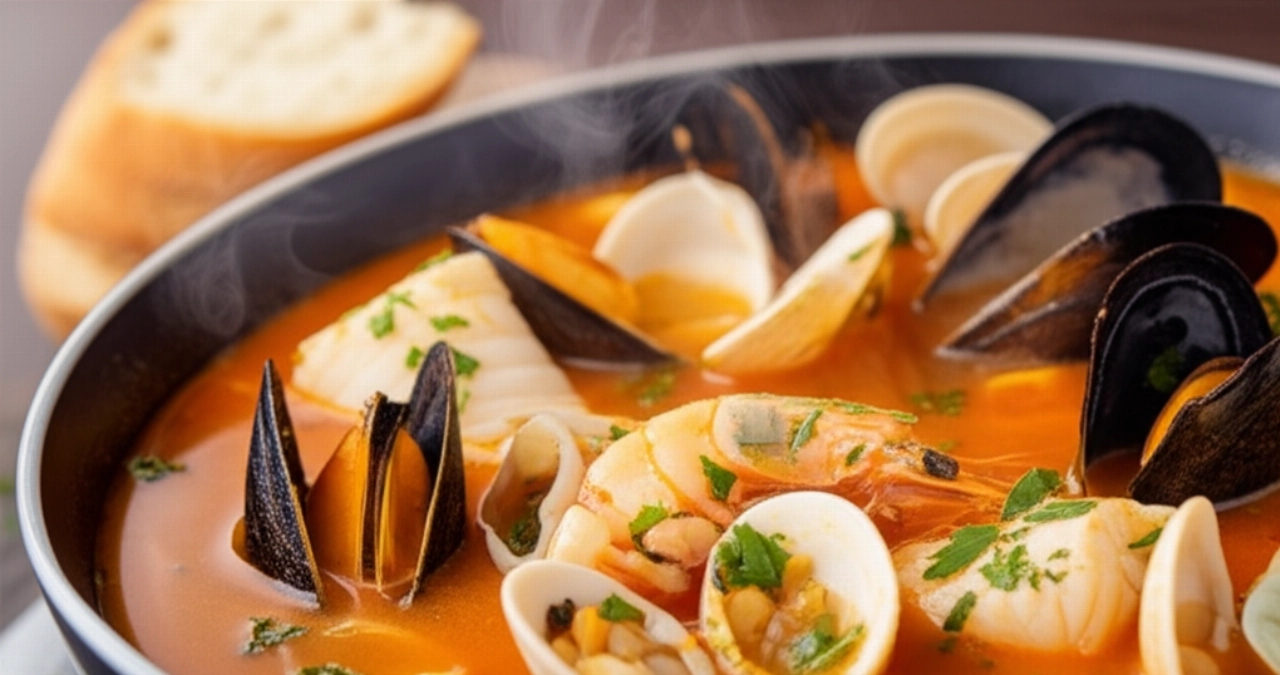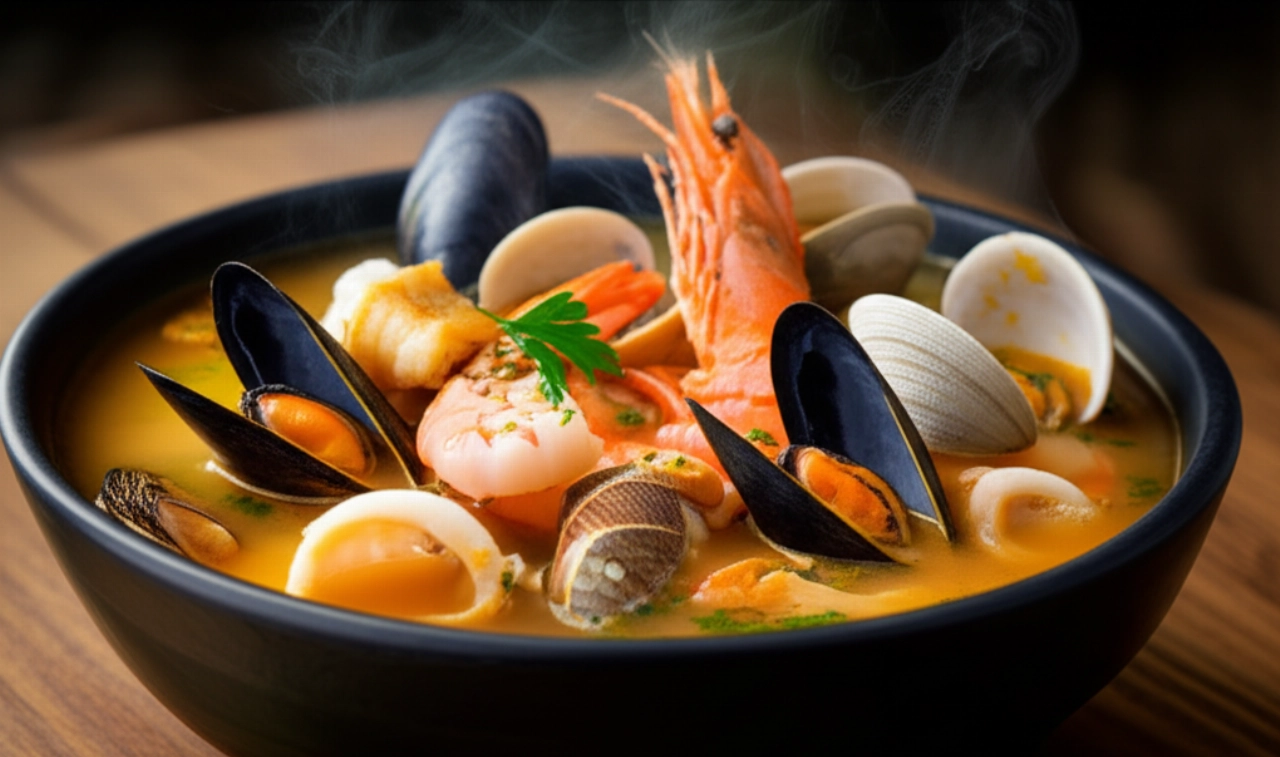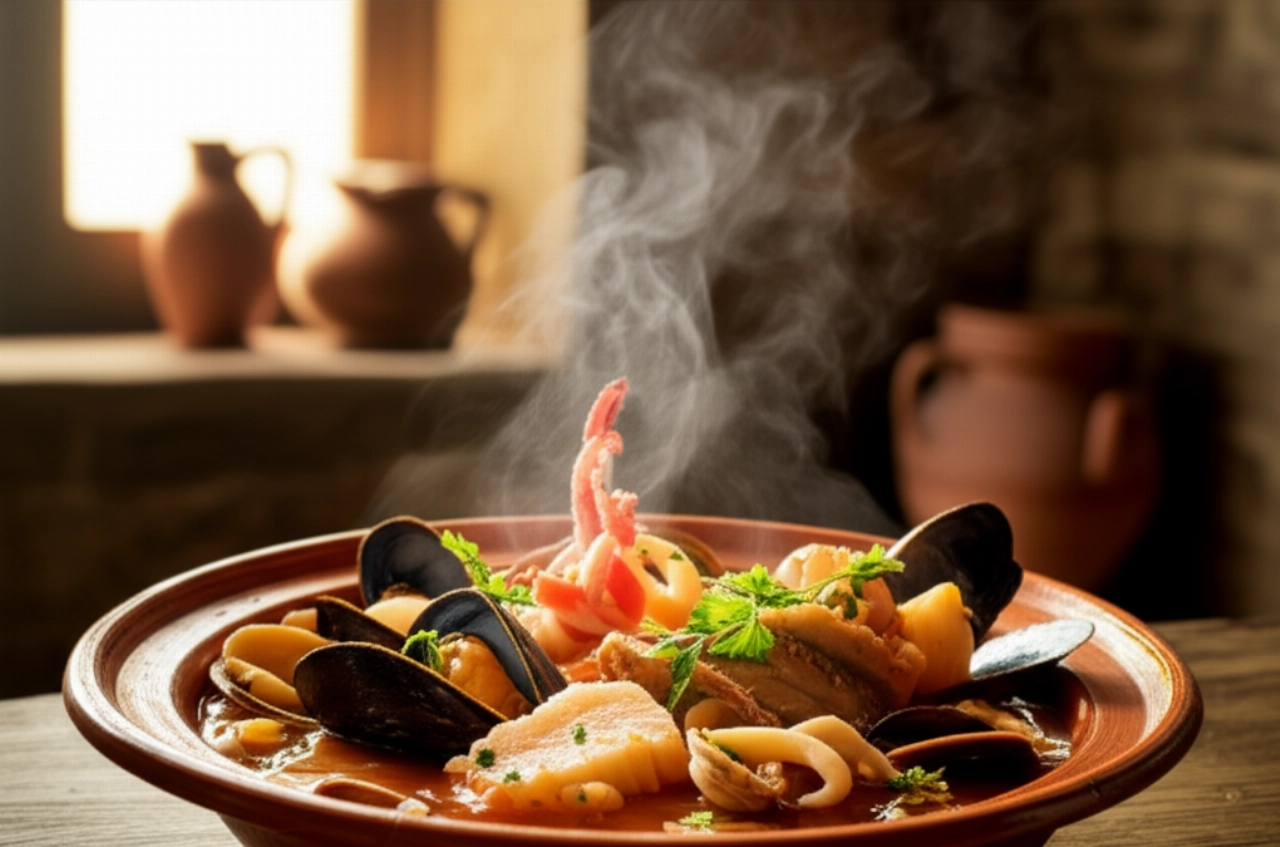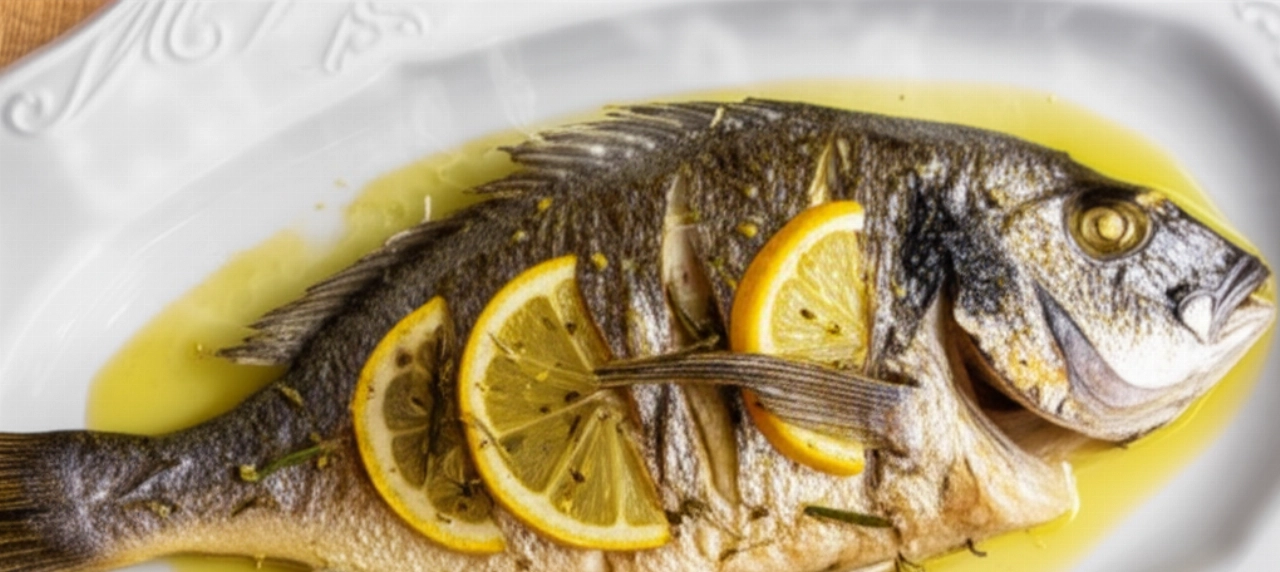Dreaming of serving a Salt-Baked Sea Bass that leaves everyone speechless, with its white, tender, and juicy flesh, protected by a perfect salt crust? But perhaps you're afraid it will dry out, that the crust won't turn out well, or that it will be difficult to fillet. Too often the result isn't what was hoped for, and wasting such a prized fish is a shame.
Don't worry, you're in the right place. Here you won't just find a list of ingredients, but a complete guide, full of grandma's (and the chef's!) tricks and tips, to prepare a Salt-Baked Sea Bass so perfect it looks like it came from a Michelin-starred restaurant. Success is guaranteed, my word!
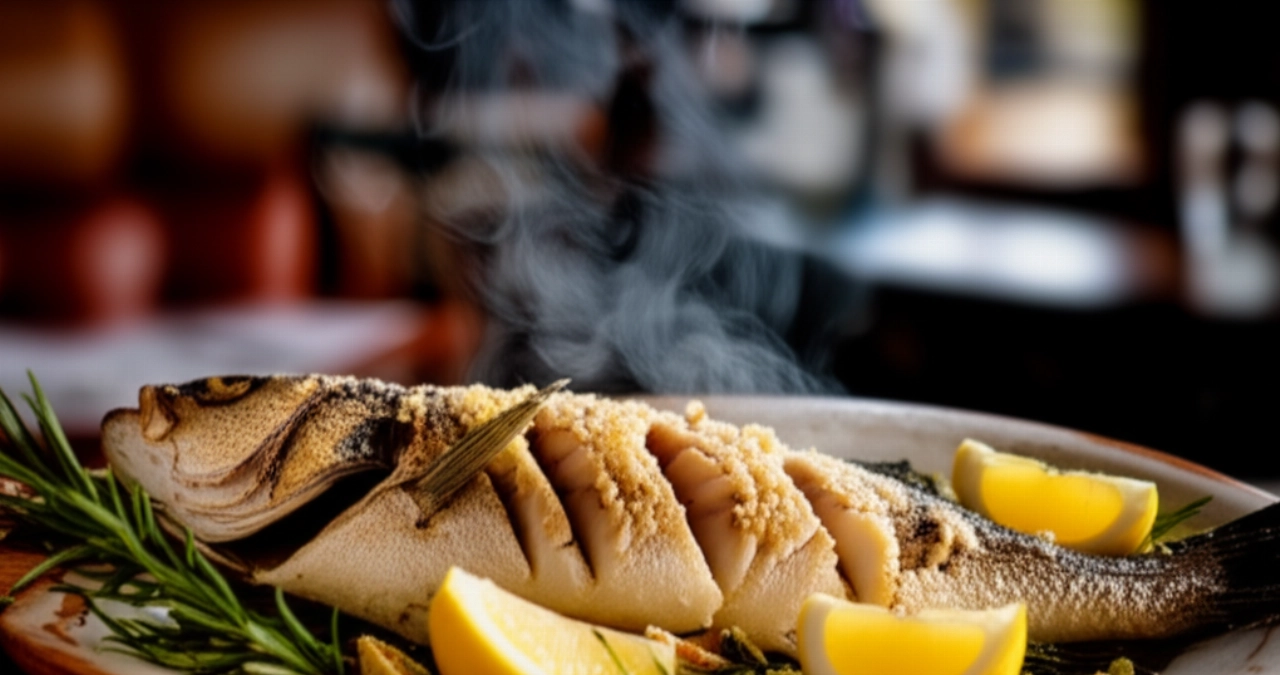
Salt-Baked Sea Bass: The Secret to a Chef's Dish
The true secret of Salt-Baked Sea Bass is not just the amount of salt, but the cooking technique that allows the fish to cook in its own steam, keeping all its juices and aromas intact. And then, there's the filleting moment: I'll show you how to do it with surprising ease, to serve an impeccable dish, worthy of a great fish restaurant. The promise is clear: no more dry or difficult-to-clean fish, here you'll get a juicy and easy-to-fillet sea bass, every single time.
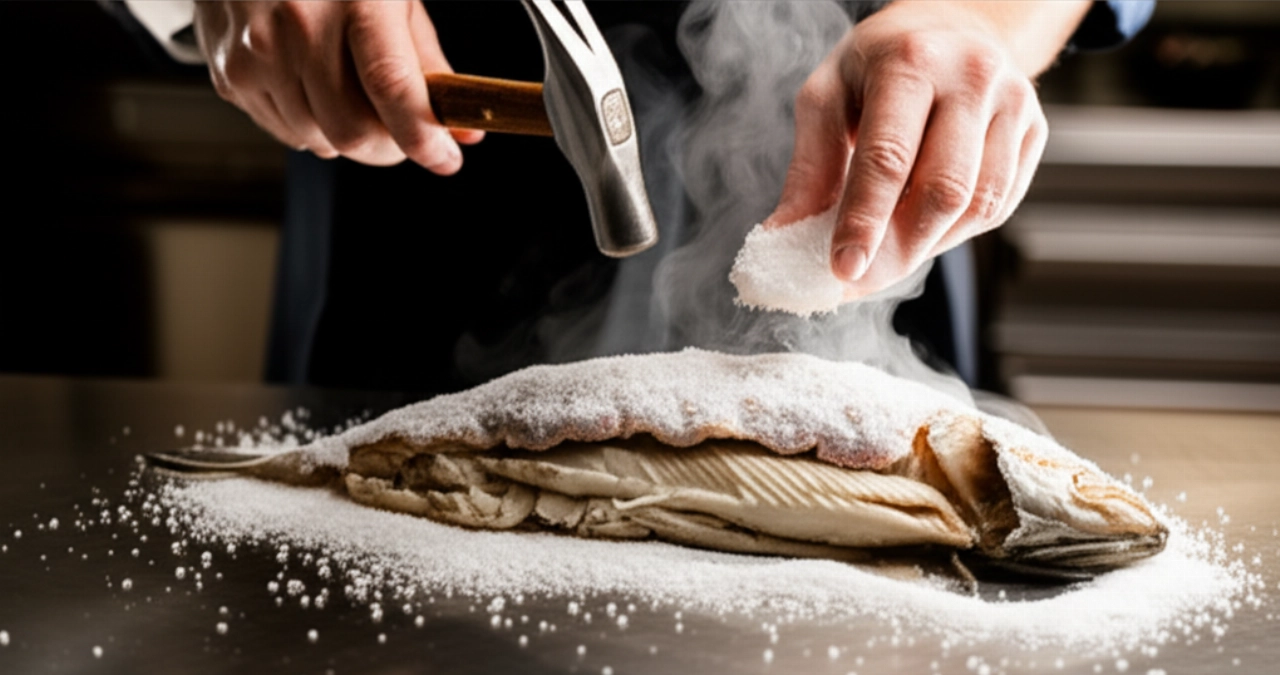
Smart Ingredients: The Choice That Makes a Difference
For a textbook Salt-Baked Sea Bass, the quality of the ingredients is fundamental. It's not just about quantity, but about choosing carefully. Let's see together what you need and why:
- Very Fresh Sea Bass: Choose a whole sea bass, gutted but not scaled (the scales will help protect the flesh from the salt). The eye should be bright and bulging, the gills a vibrant red, and the flesh firm to the touch. A fish from 800g to 1.2kg is ideal for uniform cooking.
- Coarse Sea Salt: Forget fine salt! We need coarse salt, the kind used for pasta. It's what will create the protective crust that will trap the vapors and flavors. For a 1 kg sea bass, calculate about 1-1.5 kg of salt.
- Fresh Aromatics: Rosemary, thyme, parsley, a few garlic cloves, and lemon slices. These are not just decorations, but infuse the fish with an enveloping aroma and a delicate flavor that pairs perfectly with its flesh.
- Egg White (Optional but Recommended): If you want an even more compact and easy-to-break salt crust, you can add 1-2 egg whites to the coarse salt. They will help bind the salt crystals.

The 3 Mistakes Not to Make with Salt-Baked Sea Bass (and How to Avoid Them)
Even the most experienced can fall into these traps. But with my tips, you'll be one step ahead and your sea bass will always be a success:
- Not Cleaning the Fish Well: Make sure the sea bass is well gutted, but do not scale it! The scales are a natural barrier that prevents the salt from penetrating the flesh too much, keeping it at the right level of saltiness. Rinse it well under cold water and dry it perfectly with paper towels, both inside and out. Excessive moisture can compromise the formation of the crust.
- Using Too Little Salt or Fine Salt: Salt is your ally, not the enemy! A crust that is too thin or made with fine salt will not be able to create the “steam chamber” necessary for perfect and uniform cooking. Always use coarse salt and be generous without fear: the fish will only absorb the necessary saltiness, remaining delicate.
- Overcooking or Undercooking It: This is the most common mistake. An overcooked sea bass will be dry and stringy, an undercooked one... well, it's not ideal. The golden rule is to calculate about 18-20 minutes of cooking for every kilo of fish at 180-200°C. If you have a kitchen thermometer, the ideal internal temperature in the center of the fillet should reach 60-63°C.
The Extra Touch: The Tip My Grandma Passed Down to Me
My grandma, who knew a thing or two about fish, always told me: “Inside the fish, put what you like, but don't overdo it. A sprig of rosemary and a slice of lemon are enough to work magic. And don't forget a drizzle of extra virgin olive oil on the belly before sealing the salt, for an even more intense aroma and extra tenderness.” This small gesture makes a huge difference, believe me!
Let's Prepare Salt-Baked Sea Bass Together: The Step-by-Step Guide
Ingredients:
- 1 whole sea bass (about 1 kg), gutted and unscaled
- 1.2 kg coarse sea salt
- 2 egg whites (optional, for a firmer crust)
- 2 sprigs fresh rosemary
- 2 sprigs fresh thyme
- 2 unpeeled garlic cloves (smashed)
- A few slices organic lemon
- Extra virgin olive oil q.b. (as needed)
Tools:
- Baking sheet
- Parchment paper
- Meat mallet or kitchen hammer (to break the crust)
- Spatula or large spoon
Instructions:
- Prepare the Sea Bass: Rinse the sea bass under cold running water, both outside and inside the abdominal cavity. Dry it perfectly with paper towels. This step is crucial to prevent the salt crust from sticking too much to the fish.
- Stuff the Fish: Inside the sea bass's belly, insert the rosemary and thyme sprigs, the smashed garlic cloves, and the lemon slices. Add a drizzle of extra virgin olive oil, as grandma taught you.
- Prepare the Salt Base: In a large bowl, combine the coarse salt with the egg whites (if using). Mix well with your hands until you get a consistency similar to wet sand. If not using egg whites, slightly moisten the salt with a little water, just enough to make it compactable.
- Create the Salt Bed: Line a baking sheet with parchment paper. Spread a layer of salt about 1-2 cm thick, forming a bed that has the same shape as the sea bass.
- Position the Sea Bass: Gently place the sea bass on the salt bed.
- Cover with Salt: Completely cover the sea bass with the remaining salt, pressing gently with your hands to form a compact and uniform crust. Make sure there are no cracks from which steam can escape.
- Bake: Preheat the oven to 200°C (static oven). Bake the salt-baked sea bass for about 20-25 minutes for a 1 kg fish. If your sea bass is smaller (e.g., 800g), reduce to 18-20 minutes. If it's larger (e.g., 1.2 kg), increase to 25-30 minutes. The salt crust should harden and take on a slightly golden color.
- Rest and Serve: Once cooked, remove the sea bass from the oven and let it rest for 5-10 minutes on the baking sheet. This allows the juices to redistribute in the flesh, making it even more tender and juicy.
- Break the Crust and Fillet: With a kitchen hammer or the back of a sturdy spoon, gently break the salt crust. Remove the pieces of salt and the fish skin. You'll see that the skin will come off easily along with the crust. With a spatula, gently lift the sea bass fillets, removing the central bone. Serve immediately!
Tips and Frequently Asked Questions about Salt-Baked Sea Bass
I know you might still have some doubts, and that's perfectly fine! Here are the answers to the most common questions to reassure you and guarantee you a tremendous success.
- Can I use other fish for salt baking?
Absolutely! The salt-baking technique also works very well with other fish like sea bream, European sea bass, dentex, or sargo. The important thing is that they are whole fish of similar size, to ensure uniform cooking. Cooking times may vary slightly depending on the type and size of the fish.
- Will the fish not be too salty?
No, and that's the beauty of salt baking! The salt crust creates a steam chamber that cooks the fish delicately, without the salt penetrating the flesh excessively. The result is a perfectly seasoned fish, with all its delicacy intact.
- How do I know if the sea bass is cooked just right?
In addition to the indicated times, a good indicator is the salt crust, which should be well hardened and slightly golden. If you have a kitchen thermometer, insert it into the thickest part of the fillet (without touching the bone): the ideal internal temperature is between 60°C and 63°C.
- Can I prepare salt-baked sea bass in advance?
To fully enjoy its juiciness and flavor, salt-baked sea bass should be cooked and served immediately. It's not a dish that lends itself to being prepared in advance and reheated, as it would lose its best characteristics.
Your Salt-Baked Sea Bass Masterpiece Awaits!
There you have it! Now you no longer just have a recipe, but all the secrets to bring a Salt-Baked Sea Bass to your table that tastes of the sea, authenticity, and love. You've learned not only the 'how', but also the 'why' behind each step, transforming the fear of making mistakes into the certainty of success.
Don't be afraid to experiment. Cooking is an act of creativity and a way to pamper those you love. But start from this solid base and you'll see that applause will not be lacking. Your table will become the center of unforgettable aromas and flavors.
Have you tried our recipe? We're very curious to see your masterpiece! Leave a comment below, tell us how it went, or share a photo on Instagram by tagging @CercaRicette.it. If you loved this sea bass, you can't miss our recipe for Crispy Roasted Potatoes, a perfect side dish, or for another seafood delight like Octopus with Potatoes. Until the next kitchen adventure!

